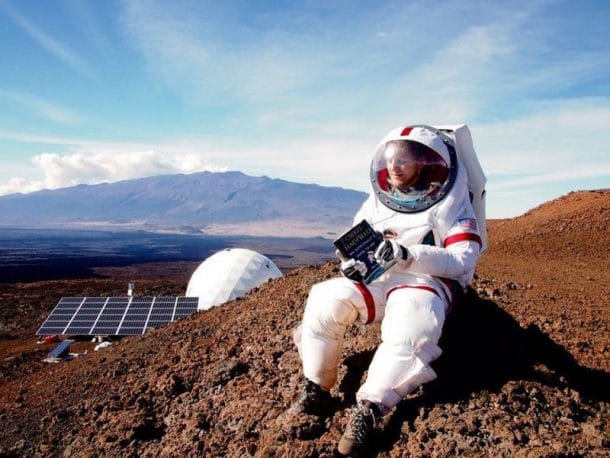The goal of living on the Red Planet is indeed becoming more achievable, as a group of researchers begin a ‘simulated’ eight-month survival mission in a geodesic dome on Hawaii’s Mauna Loa volcano in a bid to prepare for the real deal i.e. survival on Mars.

The University of Hawaii mentioned in a statement,
“During the eight-month HI-SEAS Mission V the crew will perform exploration tasks such as geological fieldwork and life systems management.”
NASA plans to send people to Mars in the coming decades, but the idea still requires a lot of testing and advancement in technology to support life and transportation on a hostile planet. NASA will also have to cater for the psychological issues that can arise from spending years in isolated and cramped quarters for such a mission. Previously, a few astronauts have flown to the International Space Station, and have lived there for extended periods of time.
For example, NASA’s Scott Kelly who had spent a year in space from 2015 to 2016 claims that he had to battle a host of physical and mental challenges during his trip to the orbit.
“During my time in orbit, I lost bone mass, my muscles atrophied, and my blood redistributed itself in my body, which strained my heart,” Kelly said in a statement announcing a book deal. “Every day, I was exposed to ten times the radiation of a person on Earth, which will increase my risk of a fatal cancer for the rest of my life. Not to mention the psychological stress, which is harder to quantify and perhaps as damaging.”
The University commented about the conditions the astronauts will be living in,
“The isolated and confined conditions of the mission, including 20-minutes of delayed communication and partial self-sufficiency, have been designed to be similar to those of a planetary surface exploration mission. They also won’t be allowed outside without protection like a spacesuit.”
The six astronauts chosen for the HI-SEAS training mission are the same ones who will be sent to Mars in the future. The team includes engineers Laura Lark, Ansley Barnard, Joshua Ehrlich and Brian Ramos, freelance researcher James Bevington, and Ph.D. candidate in astrobiology Samuel Payler.
We would appreciate your feedback in the comments’ section below!


